Mystery of the Sundial at Konark Sun Temple!
The Sundial at Konark Sun temple in India was built in 1250 A.D is full of secrets of ancient India
Total Views |
The ancient India and our ancestors have left us with many mysteries to solve, and some of the seem impossible to unravel even today. An excellent example of it is the sundial at the Konark Sun Temple – it is still a mystery to us how they managed to build it with such intricate detailing, centuries ago.
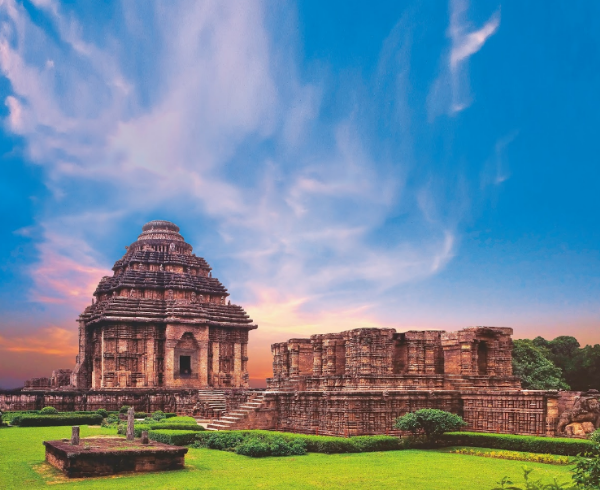
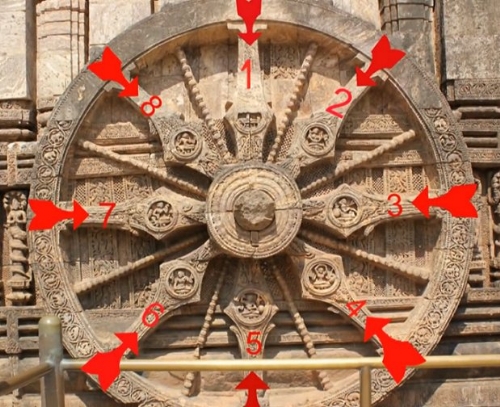
The edge of the wheel has several beads. There are 30 beads between a minor and a major spoke. So, the 90 minutes are further divided by 30 beads. This means that each bead carries a value of 3 minutes. The beads are large enough, so you can also tell if the shadow falls in the centre of the bead or on one of the ends of the bead. This way we can further calculate time accurately to the minute.
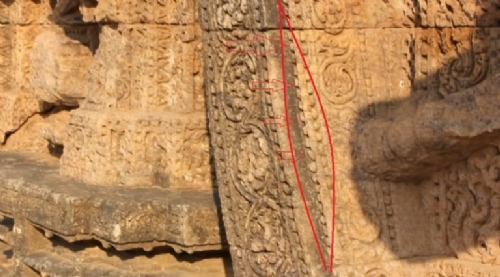
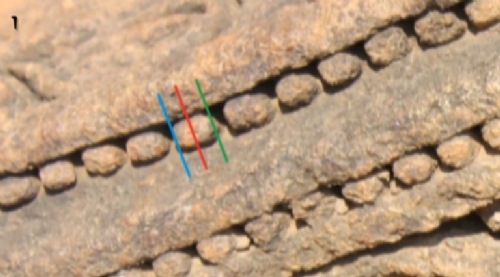
One of them would be, what happens when the sun moves from east to west? Since the wheel is carved on a wall, the sun would not shine on this wheel at all. How can we tell time in the afternoons? Now, the Sun temple has another wheel or sundial, located on the west side of the temple too. You can just use the other sundial that will work perfectly from afternoon, until sunset.
It is believed that the temple has 2 sundials which work only when the sun shines. In reality, the Konark sun temple does not have only 2 wheels like this. The temple has a total of 24 wheels, all accurately carved just like the sundials.
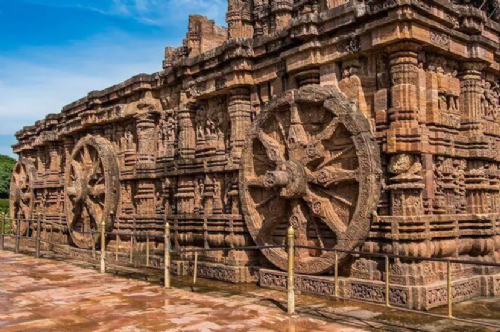
This is what people thought about the 2 sundials as well. Believe it or not, people thought that all the 24 wheels were just carved for beauty and as Hindu symbols. About 100 years ago, it came to be known that this was a sundial when an old yogi was seen calculating time secretly.
Our knowledge of just 2 sundials themselves is actually very limited. There are multiple circles of beads. There are markings and carvings all over this sundials & we don't know the meaning of most of them. There are clues on this wheels that people have overlooked for centuries. If ancient people spent a lot of time creating something, there is a very good chance that it was done for a valuable, scientific purpose.

The Konark Sun Temple is dedicated to the Hindu sun god Surya and, and is conceived as a large stone chariot having 12 wheels. It is the most famous of the sun temples built in India. The Sundial at Konark Sun temple in India was built in 1250 A.D is full of secrets of ancient India. People still, to this day, use it to tell time. Let us get to know how it works and shows time accurate to the minute!
How it works | This sundial at the temple, has 8 major spokes that divide 24 hours into 8 equal parts. This means that the time between two major spokes is 3 hours. There are also 8 minor spokes. Each minor spoke runs exactly in the middle of 2 major spokes. This means that the minor spoke divides the 3 hrs in half, so the time between a major spoke and a minor spoke is an 1 & half hours or 90 mins.

The edge of the wheel has several beads. There are 30 beads between a minor and a major spoke. So, the 90 minutes are further divided by 30 beads. This means that each bead carries a value of 3 minutes. The beads are large enough, so you can also tell if the shadow falls in the centre of the bead or on one of the ends of the bead. This way we can further calculate time accurately to the minute.

One can only imagine how much time and co-ordination must have taken place with the astronomers, engineers and the sculptors to create a structure like this one, 750 years ago!

Nevertheless, there are a few questions that come to mind regarding the sundial :
One of them would be, what happens when the sun moves from east to west? Since the wheel is carved on a wall, the sun would not shine on this wheel at all. How can we tell time in the afternoons? Now, the Sun temple has another wheel or sundial, located on the west side of the temple too. You can just use the other sundial that will work perfectly from afternoon, until sunset.
Also Read | Shore temple, that emerged from the sea: A brief history
The second question about the Konark sun temple would be, how do you tell time after sunset? There would be no sun, hence no shadows from sunset till the next morning’s sunrise.
It is believed that the temple has 2 sundials which work only when the sun shines. In reality, the Konark sun temple does not have only 2 wheels like this. The temple has a total of 24 wheels, all accurately carved just like the sundials.

At this point, we come across the moondial. Do you know that the moondials can work just like sun dials during night time? What if the other wheels in the temple could be used as moondials?
Many people think that the other 22 wheels were carved for decorative or religious purposes and do not have an actual use.This is what people thought about the 2 sundials as well. Believe it or not, people thought that all the 24 wheels were just carved for beauty and as Hindu symbols. About 100 years ago, it came to be known that this was a sundial when an old yogi was seen calculating time secretly.
Also Read | Rudreshwara, the 1000 Pillar Temple of Warangal
Apparently selected people used this wheel for generations. For 650 years, no one else knew about it. They say that when they asked him about the purpose of other 22 wheels. The yogi refused to talk, simply walked away.
Our knowledge of just 2 sundials themselves is actually very limited. There are multiple circles of beads. There are markings and carvings all over this sundials & we don't know the meaning of most of them. There are clues on this wheels that people have overlooked for centuries. If ancient people spent a lot of time creating something, there is a very good chance that it was done for a valuable, scientific purpose.


